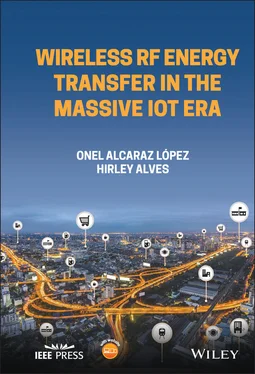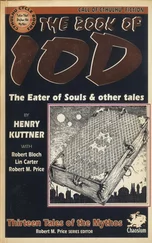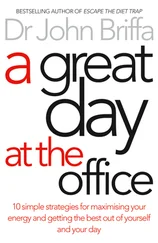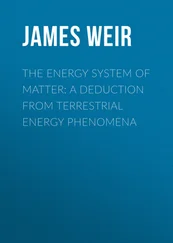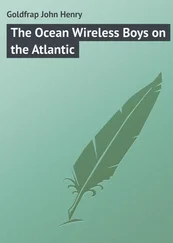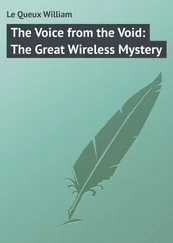Wireless RF Energy Transfer in the Massive IoT Era
Towards Sustainable Zero-energy Networks
Onel Alcaraz López
University of Oulu
Hirley Alves
University of Oulu

This edition first published 2022
© 2022 by The Institute of Electrical and Electronics Engineers, Inc. All rights reserved.
Published by John Wiley & Sons, Inc.
No part of this publication may be reproduced, stored in a retrieval system, or transmitted in any form or by any means, electronic, mechanical, photocopying, recording, scanning, or otherwise, except as permitted under Section 107 or 108 of the 1976 United States Copyright Act, without either the prior written permission of the Publisher, or authorization through payment of the appropriate per-copy fee to the Copyright Clearance Center, Inc., 222 Rosewood Drive, Danvers, MA 01923, (978) 750-8400, fax (978) 750-4470, or on the web at www.copyright.com. Requests to the Publisher for permission should be addressed to the Permissions Department, John Wiley & Sons, Inc., 111 River Street, Hoboken, NJ 07030, (201) 748-6011, fax (201) 748-6008, or online at http://www.wiley.com/go/permission.
Limit of Liability/Disclaimer of Warranty: While the publisher and author have used their best efforts in preparing this book, they make no representations or warranties with respect to the accuracy or completeness of the contents of this book and specifically disclaim any implied warranties of merchantability or fitness for a particular purpose. No warranty may be created or extended by sales representatives or written sales materials. The advice and strategies contained herein may not be suitable for your situation. You should consult with a professional where appropriate. Neither the publisher nor author shall be liable for any loss of profit or any other commercial damages, including but not limited to special, incidental, consequential, or other damages.
For general information on our other products and services or for technical support, please contact our Customer Care Department within the United States at (800) 762-2974, outside the United States at (317) 572-3993 or fax (317) 572-4002.
Wiley also publishes its books in a variety of electronic formats. Some content that appears in print may not be available in electronic formats. For more information about Wiley products, visit our web site at www.wiley.com.
Library of Congress Cataloging-in-Publication Data
Names: López, Onel Alcaraz author. | Alves, Hirley, author.
Title: Wireless RF energy transfer in the massive IoT era : towards sustainable zero-energy networks / Onel Alcaraz López, University of Oulu, Hirley Alves, University of Oulu.
Description: Hoboken, New Jersey : John Wiley & Sons, [2022]
Identifiers: LCCN 2021033393 (print) | LCCN 2021033394 (ebook) | ISBN 9781119718666 (hardback) | ISBN 9781119718680 (pdf) | ISBN 9781119718697 (epub) | ISBN 9781119718703 (ebook)
Subjects: LCSH: Wireless power transmission. | Internet of things–Power supply.
Classification: LCC TK3088 .L67 2021 (print) | LCC TK3088 (ebook) | DDC 621.319–dc23
LC record available at https://lccn.loc.gov/2021033393
LC ebook record available at https://lccn.loc.gov/2021033394
Cover image: © Shine Nucha/Shutterstock
Cover design by Wiley
Set in 10/12pt Warnock by by Integra Software Services Pvt. Ltd, Pondicherry, India
1 Cover
2 Title page Wireless RF Energy Transfer in the Massive IoT Era Towards Sustainable Zero-energy Networks Onel Alcaraz López University of Oulu Hirley Alves University of Oulu
3 Copyright
4 Preface
5 Acknowledgments
6 Acronyms
7 Mathematical Notation
8 About the Companion Website
9 1 Massive IoT1.1 Selected Use-cases and Scenarios1.2 Key Technologies1.3 Requirements and KPIs1.4 Key Enablers1.4.1 Holistic and Globally Scalable Massive IoT1.4.2 Sustainable Connectivity1.5 Final Remarks and Discussions
10 2 Wireless RF Energy Transfer: An Overview2.1 Energy Harvesting2.1.1 EH Sources2.1.2 RF Energy Transfer2.2 RF–EH Performance2.2.1 Analytical Models2.2.2 State-of-the-art on RF EH2.3 RF–EH IoT2.3.1 Architectures of IoT RF EH Networks2.3.2 Green WET2.3.3 WIT-WET Layouts2.3.4 RF EH in IoT Use Cases2.4 Enabling Efficient RF-WET2.4.1 Energy Beamforming2.4.2 CSI-limited Schemes2.4.3 Distributed Antenna System2.4.4 Enhancements in Hardware and Medium2.4.5 New Spectrum Opportunities2.4.6 Resource Scheduling and Optimization2.4.7 Distributed Ledger Technology2.5 Final Remarks
11 3 Ambient RF EH3.1 Motivation and Overview3.1.1 Hybrid of RF–EH and Power Grid3.1.2 Energy Usage Protocols3.1.3 On Efficient Ambient RF–RH Designs3.2 Measurement Campaigns3.2.1 Greater London (2012)3.2.2 Diyarbakir (2014)3.2.3 Flanders (2017-2019)3.2.4 Other Measurements3.3 Energy Arrival Modeling3.3.1 Based on Arbitrary Distributions3.3.2 Based on Stochastic Geometry3.4 A Stochastic Geometry-based Study3.4.1 System Model and Assumptions3.4.2 Energy Coverage Probability3.4.3 Average Harvested Energy3.4.4 Meta-distribution of Harvested Energy3.4.5 Numerical Results3.5 Final Considerations
12 4 Efficient Schemes for WET4.1 EH from Dedicated WET4.2 Energy Beamforming4.2.1 Low-complexity EB Design4.2.2 CSI-limited Energy Beamforming4.2.3 Performance Analysis4.3 CSI-free Multi-antenna Techniques4.3.1 System Model and Assumptions4.3.2 Positioning-agnostic CSI-free WET4.3.3 Positioning-aware CSI-free WET4.4 On the Massive WET Performance4.5 Final Considerations
13 5 Multi-PB Massive WET5.1 On the PBs Deployment5.1.1 Positioning-aware Deployments5.1.2 Positioning-agnostic Deployments5.2 Multi-antenna Energy Beamforming5.2.1 Centralized Energy Beamforming5.2.2 Distributed Energy Beamforming5.2.3 Available RF Energy5.3 Distributed CSI-free WET5.3.1 SA, AA–IS and RPS–EMW5.3.2 AA–SS5.3.3 RAB5.3.4 Positioning-aware CSI-free Schemes5.3.5 Numerical Examples5.4 On the Deployment Costs5.5 Final Remarks
14 6 Wireless-powered Communication Networks6.1 WPCN Models6.2 Reliable Single-user WPCN6.2.1 Harvest-then-transmit (HTT)6.2.2 Allowing Energy Accumulation6.2.3 HTT versus FEIPC6.3 Multi-user Resource Allocation6.3.1 Signal Model6.3.2 Problem Formulation6.3.3 Optimization Framework6.3.4 TDMA versus SDMA6.4 Cognitive MAC6.4.1 Time Sharing and Scheduling6.4.2 MAC Protocol at the Device Side6.4.3 MAC Protocol at the HAP Side6.5 Final Remarks
15 7 Simultaneous Wireless Information and Power Transfer7.1 SWIPT Schemes7.2 Separate EH and ID Receivers7.2.1 Problem Formulation7.2.2 Optimal Solution7.2.3 Performance Results7.3 Co-located EH and ID Receivers7.3.1 Time Switching7.3.2 Power splitting7.3.3 TS versus PS7.4 Enablers for Efficient SWIPT7.4.1 Waveform Optimization7.4.2 Multicarrier SWIPT7.4.3 Cooperative Relaying7.4.4 Interference Exploitation7.4.5 Artificial Intelligence7.5 Final Considerations
16 8 Final Notes8.1 Summary8.2 Future Research Directions
17 A A Brief Overview on Finite Block Length CodingA.1 Finite Block Length Model
18 B Distribution of Transferred RF Energy Under CSI-free WETB.1 Proof of Theorem 4.2B.2 Proof of Theorem 4.4
19 C Clustering AlgorithmsC.1 Partitioning MethodsC.1.1 K-MeansC.1.2 K-MedoidsC.1.3 K-ModesC.2 Hierarchical MethodsC.3 Other MethodsC.4 Pre-processing
20 D Required SNR for a Target Decoding Error Probability (Proof of Theorem 6.1)D.1 On the Convergence of Algorithm 3
21 Bibliography
22 Index
23 End User License Agreement
1 Chapter 1 Figure 1.1IoT connectivity growth trends (2015-2026). Figure 1.2Estimate of the number of connected... Figure 1.3Illustrative massive IoT use-cases. Figure 1.4Comparison of LPWA technologies in terms... Figure 1.5KPIs for massive IoT.
Читать дальше
